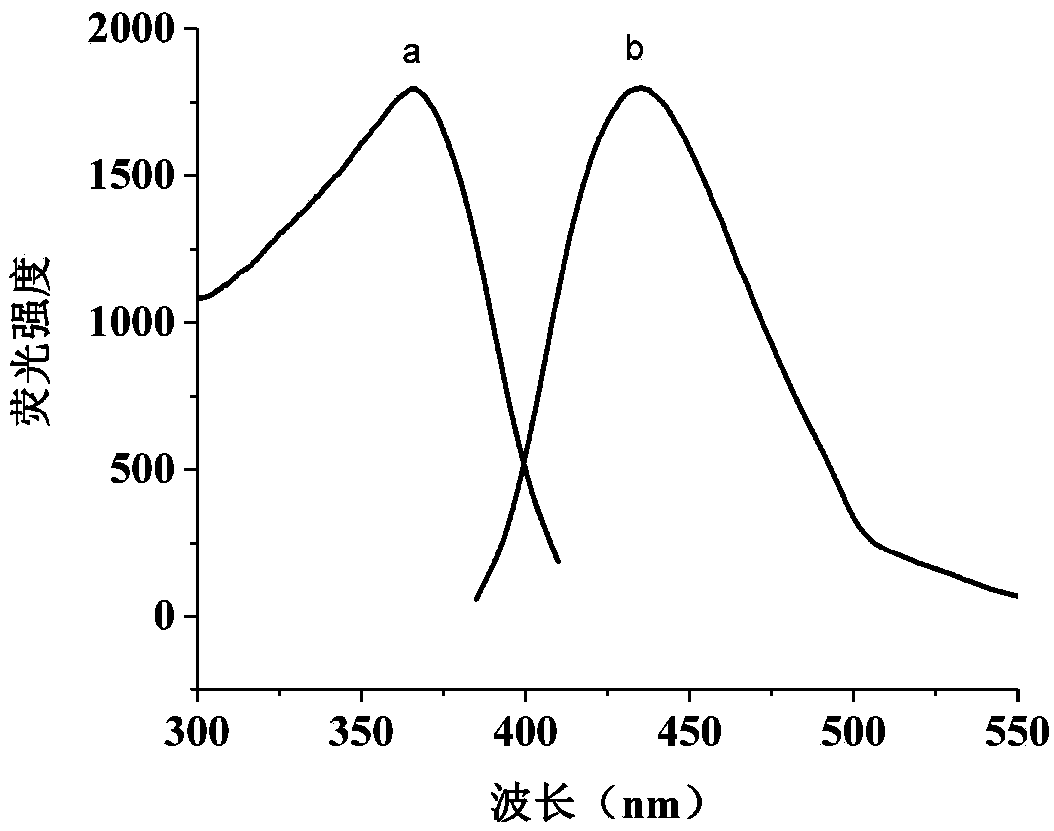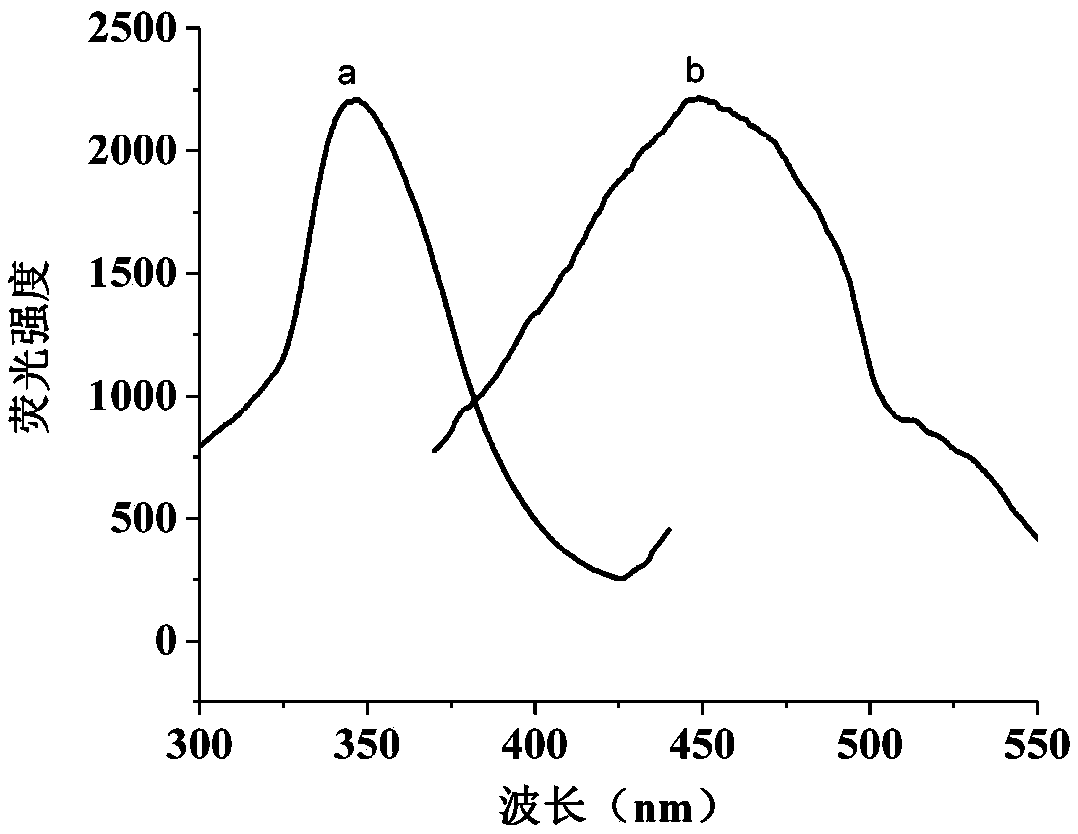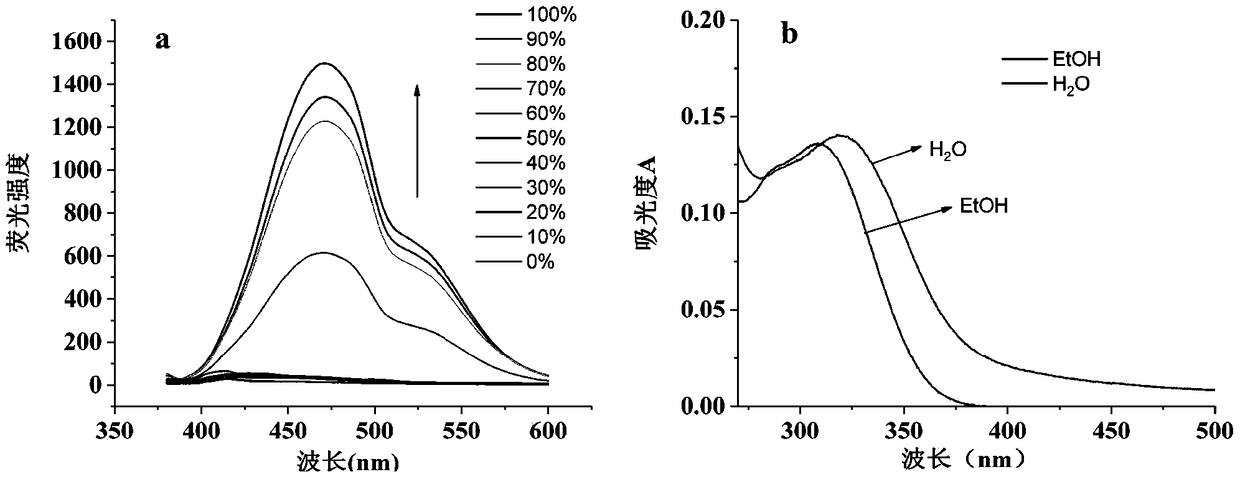Preparation method and application of aggregation induced luminescence-molecular imprinting fluorescence sensor for detecting rhodamine B
An aggregation-induced luminescence, fluorescence sensor technology, applied in fluorescence/phosphorescence, material excitation analysis, material analysis by optical means, etc., to achieve the effect of improving detection sensitivity and accuracy, less organic reagents, and high yield
- Summary
- Abstract
- Description
- Claims
- Application Information
AI Technical Summary
Problems solved by technology
Method used
Image
Examples
Embodiment 1
[0036] Example 1, Preparation of functionalized AIE molecule 4-(1,2,2-triphenylethenyl)phenylacrylate
[0037] (1) Weigh 2mmol triphenylbromoethylene into a 100mL round bottom flask, then add 2.4mmol 4-hydroxyphenylboronic acid, 20mmol potassium carbonate to provide an alkaline environment, then add 0.10mmol tetrakis(triphenylphosphine) palladium, 15mL Water and 25mL tetrahydrofuran (THF) were used as solvents, the flask was evacuated and filled with nitrogen protection, and reacted at 85°C for 12h; the resulting product was filtered, the filtrate was collected, and the organic phase was collected after extraction with dichloromethane; 5g of anhydrous sulfuric acid was added After sodium drying, it is separated by column chromatography (eluent is petroleum ether-ethyl acetate with a volume ratio of 1:30-1:10, gradient elution) to obtain the functionalized AIE molecular intermediate 4-(1,2,2 - triphenylvinyl)phenol;
[0038] (2) Dissolve 4 mmol of functionalized AIE molecular ...
Embodiment 2
[0040] Example 2, Preparation of Aggregation-Induced Luminescence-Molecularly Imprinted Fluorescent Sensors (AIE-MIPs)
[0041] Accurately weigh 1.0 mmol of warfarin and place it in a 250 mL three-neck flask, add 0.2 g of azobisisobutyronitrile (AIBN), 150 mL of acetonitrile, then add 9 mmol of α-methacrylic acid (α-MAA), 60 mmol of ethylene glycol dimethyl base acrylate (EDMA), then add 0.01mmol functionalized AIE molecule 4-(1,2,2-triphenylethenyl)phenylacrylate (1 / 100 of the molar amount of the template), and ultrasonically vibrate for 15min to make it All dissolved, reacted under mechanical stirring for 8 hours under the condition of 83°C, filtered with suction, dried and eluted to obtain AIE-MIPs.
[0042] Among them, the elution method is: build a Soxhlet extraction device, add 200mL of a mixture of methanol and acetic acid (volume ratio 4:1), wrap the synthesized AIE-MIPs with filter paper and put them into the Soxhlet extraction device , control the temperature at 90°...
Embodiment 3
[0044] Embodiment 3, the test of functionalized AIE molecule performance
[0045] 3.1 The effect of solvent on the fluorescence intensity of functionalized AIE molecules
[0046] The mixed solvent of water / ethanol (the volume fraction of water is respectively 0%, 10%, 20%, 30%, 40%, 50%, 60%, 70%, 80%, 90%, 100%) preparation concentration is 1×10 -5 mol / L functionalized AIE molecule solution, ready for use, check the fluorescence spectrum, see the results image 3 (a). Depend on image 3 (a) It can be seen that when the volume fraction of water reaches 70%, the fluorescence emission is obviously enhanced. The fluorescence intensity of functionalized AIE molecules in pure water is 45 times higher than that in pure ethanol. In general, water is a poor solvent for most organic substances, and functionalized AIE molecules aggregate in water, thus producing strong fluorescence, that is, AIE luminescence. Therefore, as the volume fraction of water in the mixed solvent increase...
PUM
 Login to View More
Login to View More Abstract
Description
Claims
Application Information
 Login to View More
Login to View More - R&D
- Intellectual Property
- Life Sciences
- Materials
- Tech Scout
- Unparalleled Data Quality
- Higher Quality Content
- 60% Fewer Hallucinations
Browse by: Latest US Patents, China's latest patents, Technical Efficacy Thesaurus, Application Domain, Technology Topic, Popular Technical Reports.
© 2025 PatSnap. All rights reserved.Legal|Privacy policy|Modern Slavery Act Transparency Statement|Sitemap|About US| Contact US: help@patsnap.com



